Millner Group: People
|
Prof Paul A. MillnerProf Paul Millner directs the Bionanotechnology group at the University of Leeds. The group’s interests can be divided broadly into two main themes; biosensors and nanotechnology. Biosensors are being developed against a wide range of analytes, from small molecules and ions up to whole cells. Nanotechnology encompasses research into nanoparticles for medicine and nanofibres for environmental applications. Paul is keen to collaborate and has led several large EU projects which have resulted in spin-off companies. Paul initially trained as a Biochemist and obtained his PhD in Plant Sciences from the University of Leeds. After around 12 years working on plant cell signalling, his research shifted direction and he is now a leader in biosensors and bionanotechnology. Paul is also Director of the School of Biomedical Sciences and delivers lectures on a range of topics. |
| Postdoctoral Staff | |
|
|
Dr Tim GibsonTim's particular interests are in the areas of sensor interrogation, interfaces between materials and biology, biological micro and nano-environments, conducting and semi-conducting polymers and the application and translation of science and technology. To do this he has founded several SME's. See www.technologytranslators.com for some detailed information. He is also involved with EU funded projects ELISHA, SANTS and COMBIO. See www.immunosensors.com for more information on the ELISHA project. Webpage |
Dr Carolyn Jackson |
|
 |
Dr Alexandre Vakourov |
 |
Jack Goode, BSc.,PhD.Jack's project is looking at the development of impedimetric immunosensors for biomarkers of Infammatory bowel disease. This build on Jack's PhD which investigated the use of and modification of nanobodies on impedimetric immunosensrs, which was completed in 2015. Previously Jack studied for a BSc in Nanotechnology in 2007. During this course he studied a wide variety of topics with a 6 month project in novel photo-activated dental materials. email |
| PhD Students | |
Eiman Alenezi, BsC |
|
Dr Yazan Khaled |
|
Shazana Shamsuddin, BsC. |
|
Hussaini Majiya, BSc., MSc.,Hussaini's PhD research is concerned with the development of photosensitizer loaded Electrospun nanofibers for sunlight driven clean-up and remediation of water polluted with microorganisms, soluble organic materials like dyestuffs and other process by products. A range of natural and synthetic photosensitizers will be covalently attached to Electrospun polymeric nanofibers which bear surface reactive groups. The ability of the functionalised fibers to generate reactive oxygen species (ROS) and for the ROS to cause partial or complete inactivation and degradation of model microorganisms and organic pollutants will be tested using a range of microbiological, chemical and biochemical analytical techniques such as plaques assay, live-death assay, qPCR, HPLC and optical spectroscopy. |
|
Pattanapong Thangsunan (Por), BSc., MSc.Por’s PhD project focuses on the development of an Adhiron-based impedimetric biosensor which is expected to be a new analytical platform for biorecognition applications. The main aim of this project is to use Adhirons, an alternative binding protein as a bioreceptor on the surface of the sensor for the detection of small molecules including haptens and protein biomarkers of disease. Afterwards, the sensor will be miniaturised into a small device for point-of-care diagnosis and environmental monitoring. Por was awarded both a bachelor’s and a master’s degree from Department of Biology, Faculty of Science, Chiang Mai University, Thailand, and joined Millner’s group in July 2014. Email |
|
 |
Thanisorn Mahatnirunkul (Ploy), BSc, MSc.Ploy is developing nanoparticle size shift assays for biomolecular analytes using non-antibody evolved protein. This new mode of analysis will depend on the size shift of nanoparticle-tethered-drug supramolecular structure when the binding protein either binds or debinds. Also, the assay will be validated with a range of small and large biomolecule analytes and compare with conventional assays. Ploy studied her bachelor degree in Pharmaceutical Sciences at Chiang Mai University, Thailand. She continued her master degree at University of Leeds, graduating with a MSc (distinction) in Bionanotechnology in 2013. Her project aims to provide the assays for screening new drugs within the pharmaceutical industry and for diagnostic purposes by approaches that minimize processing steps and label-free. Email |
 |
Kaniz Chowdhury, BSc. MSc.Kaniz's PhD project focuses on developing photosensitiser functionalized electrospun nanofibres for the photodynamic inactivation of water contaminants. Her primary research involves water borne pathogens. She will also study the photoremediation of chemical contaminants of water. Her aim is to develop an efficient and easily affordable technology for water treatment. Kaniz obtained her BSc. in Chemistry from the University of Dhaka, Bangladesh where she gained research experience in the phytochemical study of Couroupita guianensis. Working at the Institute of Cancer Therapeutics (ICT) at the University of Bradford she also researched colchicine, a major alkaloid which derives its therapeutic activity by binding to tubulin. She carried out synthesis of a series of halogenated aryl linked colchinoids to develop a library of compounds for structure-activity relationship studies. While working in ICT she gained an interest in the interface between chemistry and biology, and she did her MSc in Chemical Biology and Drug design at the University of Leeds in 2012. Her research project was on 'Development of activity based probes for class I aldolases. Email |
| Alumni | |
 |
Dr Jim Tiernan, MBChB., MRCS.Jim is interested in improving outcomes in colorectal cancer surgery by stratifying intra-operative surgical decision making. His PhD project involves developing an intra-operative fluorescent imaging system for use in laparoscopic surgery. Jim is using fluorescent nanoparticles, quantum dots and simple fluorophores to target tumour-specific antigens on colorectal cancer cells. Email |
 |
Dr Asif Ahmed,Asif worked on fabrication of antibody based sensor on screen printed gold electrode surface for the detection of whole microorganism. Electrochemical techniques, specifically electrochemical impedance spectroscopy (EIS) were used to characterize the layer by layer sensor construction and analyte binding. His research focused on detection of pathogenic bacteria Streptococcus pyogenes, a causative agent for invasive and non-invasive infections in human, both in buffers and biological samples like saliva. He is also used fluorescence based on-sensor techniques, scanning electron microscopy to characterize sensor surfaces before and after analyte addition. The results will helped make reproducible sensor surface with minimum non-specific binding which can be readily used onsite for rapid diagnosis followed by prompt medical treatment. |

|
Dr Sarah Aickin,Sarah has joined the Millner group following 11 years previous experience working in industry. After completion of her MChem and DPhil in Biological Chemistry from Oxford University she worked for a small start up company using nanotechnology to detect genetic mutations. She has more recently been responsible for the development of diagnostic systems for chronic non-healing wounds such as venous leg ulcers, pressure ulcers and diabetic foot ulcers and is now developing biosensors to aid in the diagnosis of anastomotic leakage following colorectal surgery. |
 |
Dr Natalie Hirst, BSc. MBBS. MRCS. PhDNatalie completed her PhD as a surgical trainee, funded by the Leeds Teaching Hospitals NHS Trust Charitable foundation and the Bowel Disease Research Foundation. Her research was therefore clinically orientated; developing a series of electrochemical biosensors for early detection of anastomotic leak, a surgical bowel complication. Natalie presented her work at a variety of national and international medical and biosensing conferences, and came 2nd in the University of Leeds Showcase for postgraduate researcher of the year (2013). |
 |
Dr. Doug Pike, BScDoug developed an automated and remotely controlled system for the real time monitoring of potential contaminants in water bodies (e.g. groundwater) affected by legacy leakage associated with radioactive waste storage and disposal. Specifically, his research developed a robust method of deploying a biosensor for the detection of Uranyl ions (UO22+) in real contaminated sites. The biosensor was designed and developed by a previous member of the Millner lab team (Dr David Conroy).As part of the project, Doug has devised a protocol for the design and operation of a flow cell within which the biosensor could be deployed.. |
 |
Dr Jo RushworthJo was the Millner lab manager and worked as a post-doc in the group, alongside providing grant writing support. She was interested in developing biosensors and diagnostic and therapeutic bio-nanoengineered platforms for disease-causing amyloid proteins, such as Aβ and β2M. Prior to joining the Millner group, Jo completed her Wellcome Trust-funded PhD in Structural Molecular Biology, during which she studied the interaction between the prion protein and Aβ oligomers (Hooper lab, University of Leeds). Her PhD also involved short projects in chemistry (structure-based drug design), protein purification and FRET. During Jo’s degree in Biochemistry, she gained research experience in gene silencing (Gatsby scholarship in the Baulcombe group, Sainsbury Laboratory), plant science (Baker group, University of Leeds) and microbiology and molecular biology (research/study year at the Université Paris-Sud, France). Jo also taught Chemistry (ages 8-18) for several years and remains passionate about teaching and learning and making science accessible, exciting and engaging. |
Rob Bedford, BSc.Rob was working on a collaborative project with the Liverpool School of Tropical Medicine. This project involved looking at the stabilisation of enzymes used within diagnostic assays developed for the measurement of insecticides. With successful stabilisation of these enzymes, this could lead to improved quantification of insecticides, ultimately enabling more efficient targeting of disease-transmitting mosquitoes. Rob graduated from the University of Bradford in 2011 with a degree in BSc Biomedical Science. During this course he studied a wide variety of topics with specialisation in medical biochemistry in his final year. Subsequently, Rob gained lab and teaching experience as a laboratory demonstrator and an A-level Biology tutor. |
|
 |
Dr David ConroyDavid was funded under the DIAMOND partnership with the task of developing groundwater radiation sensors. This was primarily for environmental and defence technologies to detect groundwater contamination form UK nuclear legacy sites whcih has escaped into the environment. Within the first 18 months of his PhD he developed a novel system of uranyl ion sensing using S layer proteins of Archaebacteria which had evolved to thrive in radioactive waste. During his PhD, David also co-authored a chapter in the book "Biosensors for medical applications". |
Dr Ashraf ShahadinAshraf's PhD project involved studying carbohydrate-binding biosensors. This was achieved using impedimetric methods to analyse the binding of sugars to the sensor surface. |
|
 |
Dr Rebecca CaygillRebecca was researching biosensors for adenovius particles using a variety of systems. Coming from a biochemical background her project involved both biosensors and virology working in collaboration with Prof Eric Blair. Whilst completing her PhD she worked for Campus PR, an external press agency that holds accounts with the Unviversity of Leeds. Since finishing her PhD, Rebecca has gone on to work for College Hill PR, an agency for life sciences as well as medical, pharmaceutical and biotech industries. |
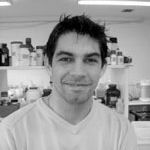 |
Dr Mike BroderickMike was working upon the production of nanosilicate particles and surfaces for the entrapment and stabilisation of enzymes in both single and multiple cascade arrangements. His project centred around the use of a small peptide called R5 which has been isolated from silica precipitating proteins called silaffins, used by diatomaceous organisms for the construction of their silica frustules. This work was funded through an EC project called SANTS (Synthesis and Application of Nanostructured Silicates), details of which can be found at www.sants-nanosilicates.com. |
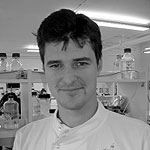 |
Dr Henry HaysWhilst working in the group, Henry was working on acetylcholinesterase-based biosensors for the detection of harmful organopesticides and derivatives thereof. His work involved immunosensors and amperometric based biosensors, stabilisation of whole cells and biologicals and bioluminescence and bacterial physiology. |
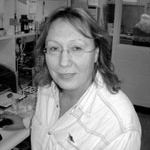 |
Dr Nadia Lyubimova |
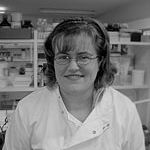 |
Dr Frances NevilleFrances worked on an EC sponsored project called SANTS - "Synthesis and Application of Nanostructured and Tethered Silicates" as a Research Fellow/Project Manager. The project involved the production of silicate-based biosensor and biocatalytic surfaces. For more information on the project please visit the SANTS website.
|
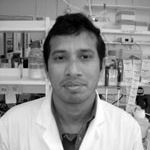 |
Dr Md Morsaline BillahMorsaline obtained his PhD in 2008, working on the development of mixed self-assembled monolayer based immunosensors against cardiac markers; myoglobin, cardiac troponins and sLOX-1. He employed electrochemical impedance spectroscopy (EIS) techniques for characterising sequential immunosensor sensor surface assembly towards bio-recognition element (antibody) immobilisation and monitoring antibody-antigen interactions. He also investigated sensors using atomic force microscopy (AFM) and quartz crystal microbalance (QCM) to follow the immobilisation steps. The aim of this project was to develop a point-of-care diagnostic device to detect acute myocardial infarction (AMI). Watch video |
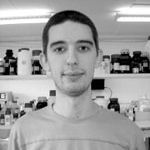 |
Dr. Nikolay PchelintsevNik obtained his PhD on the development of disposable amperometric biosensors based on screen-printed carbon electrodes. Watch video |
 |
Dr. Mark RodgersMark obtained his PhD on the development of non-immunological electrochemical affinity sensors. |


